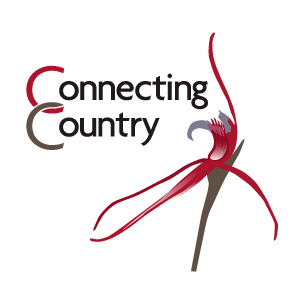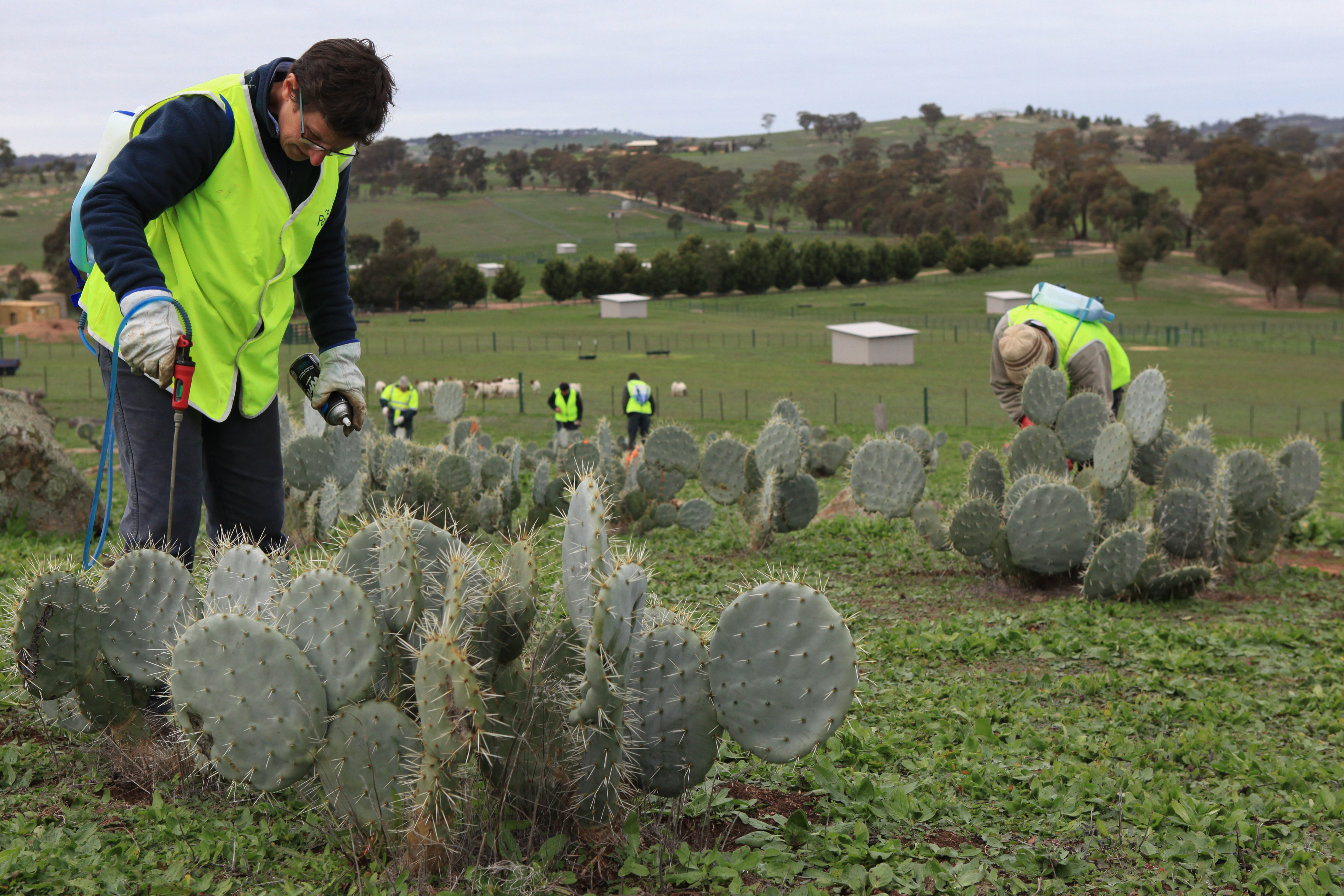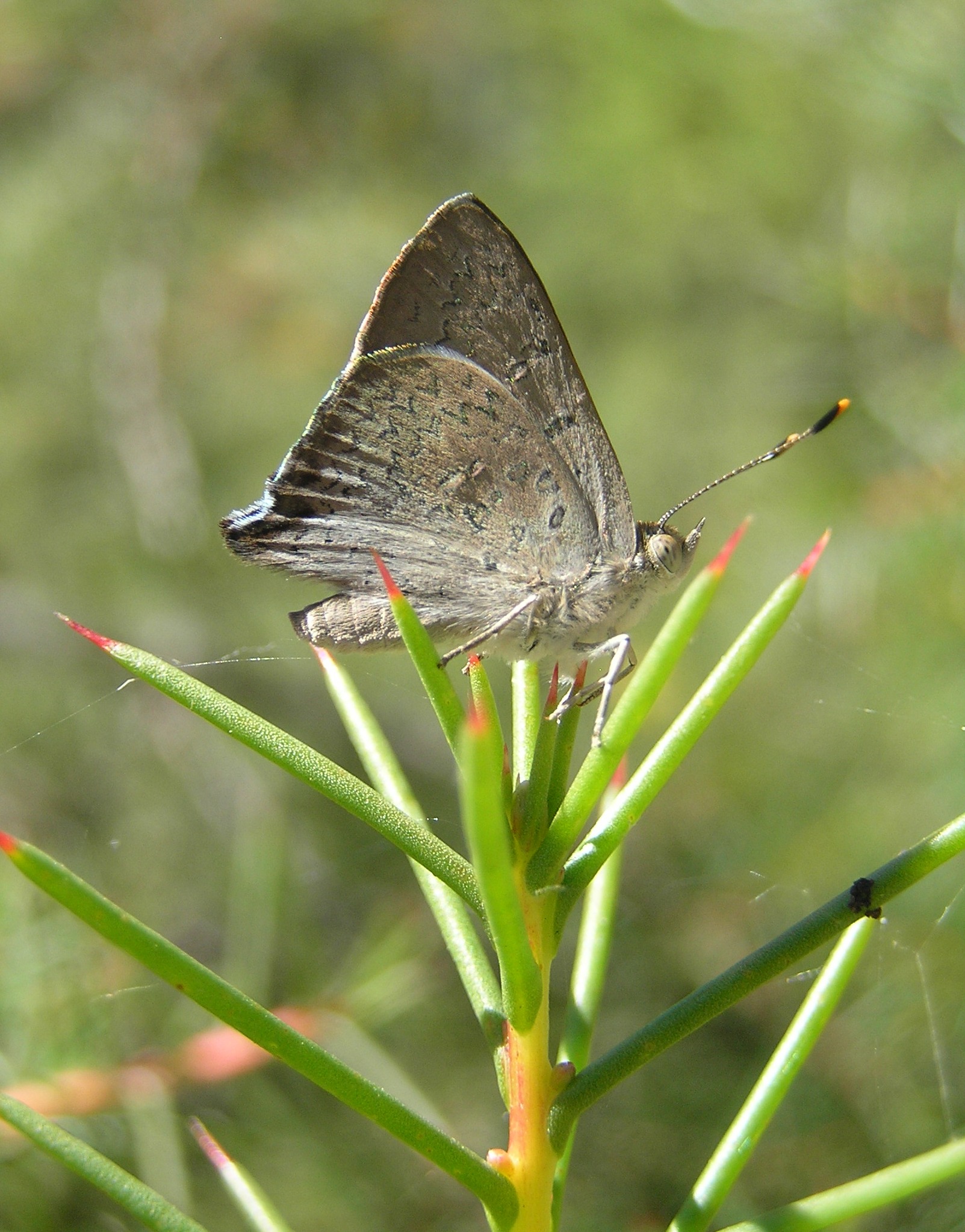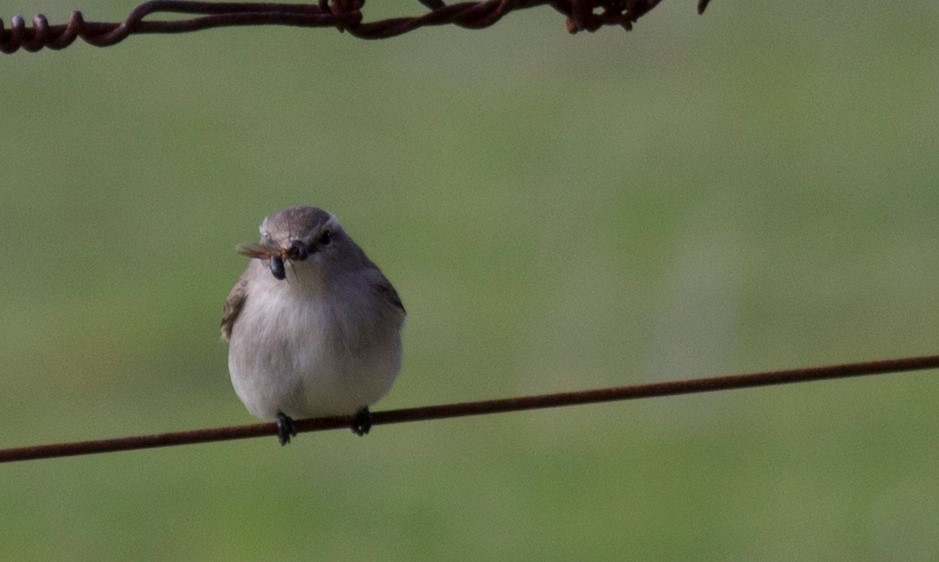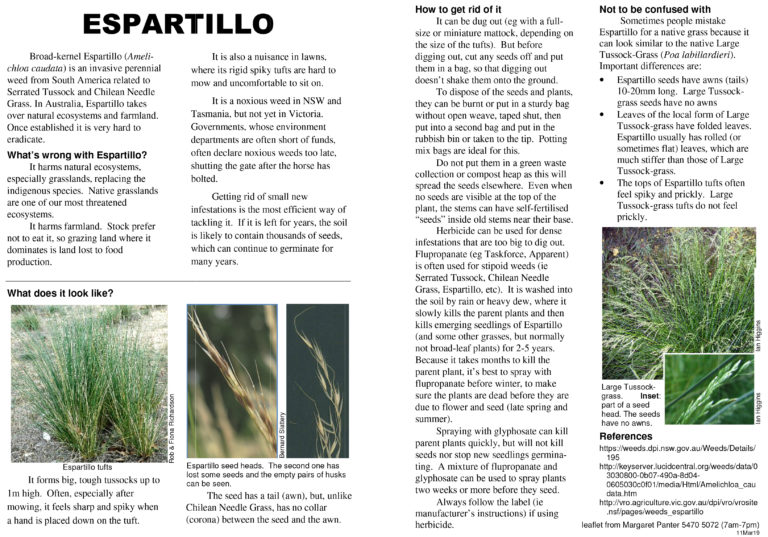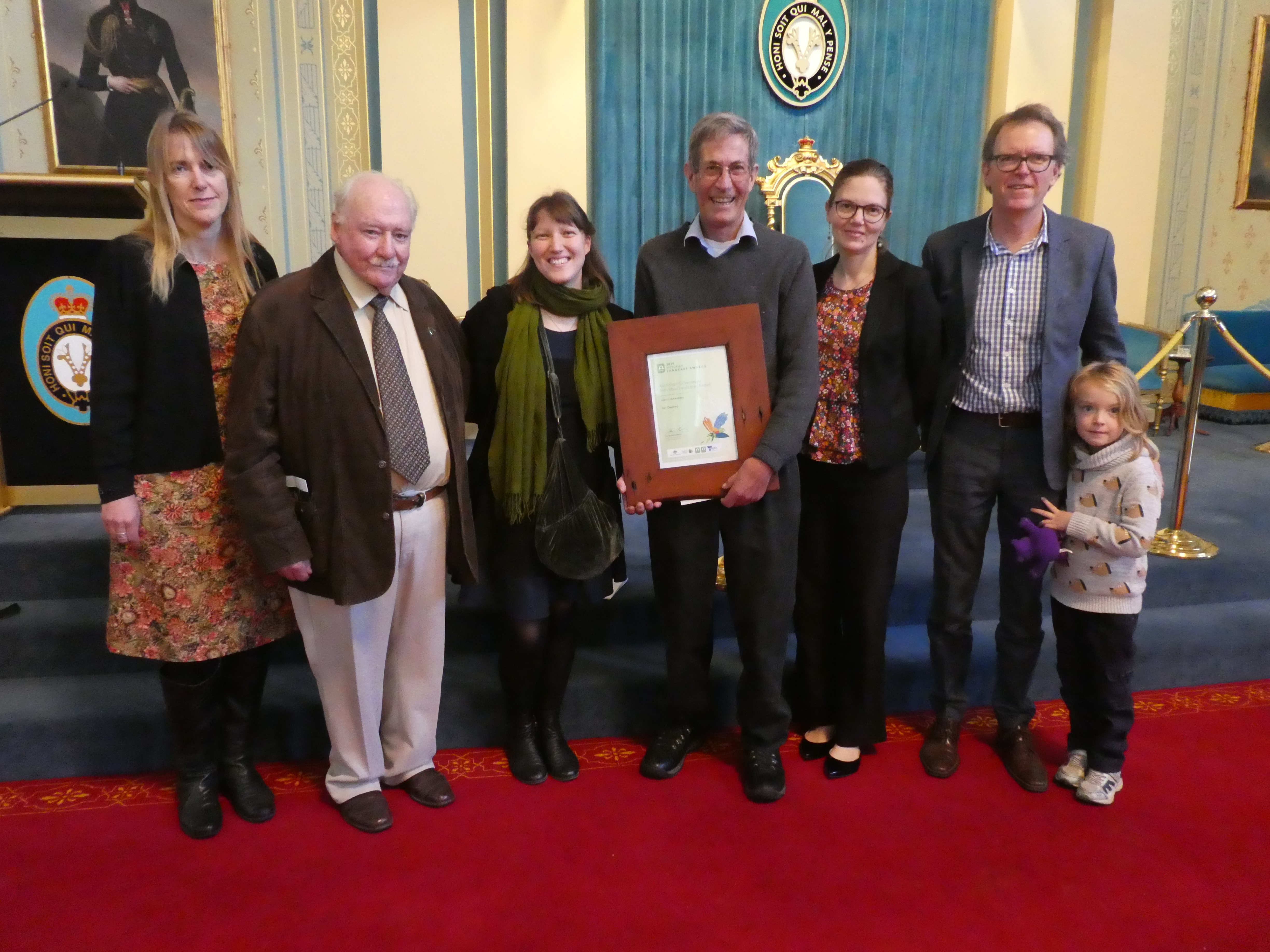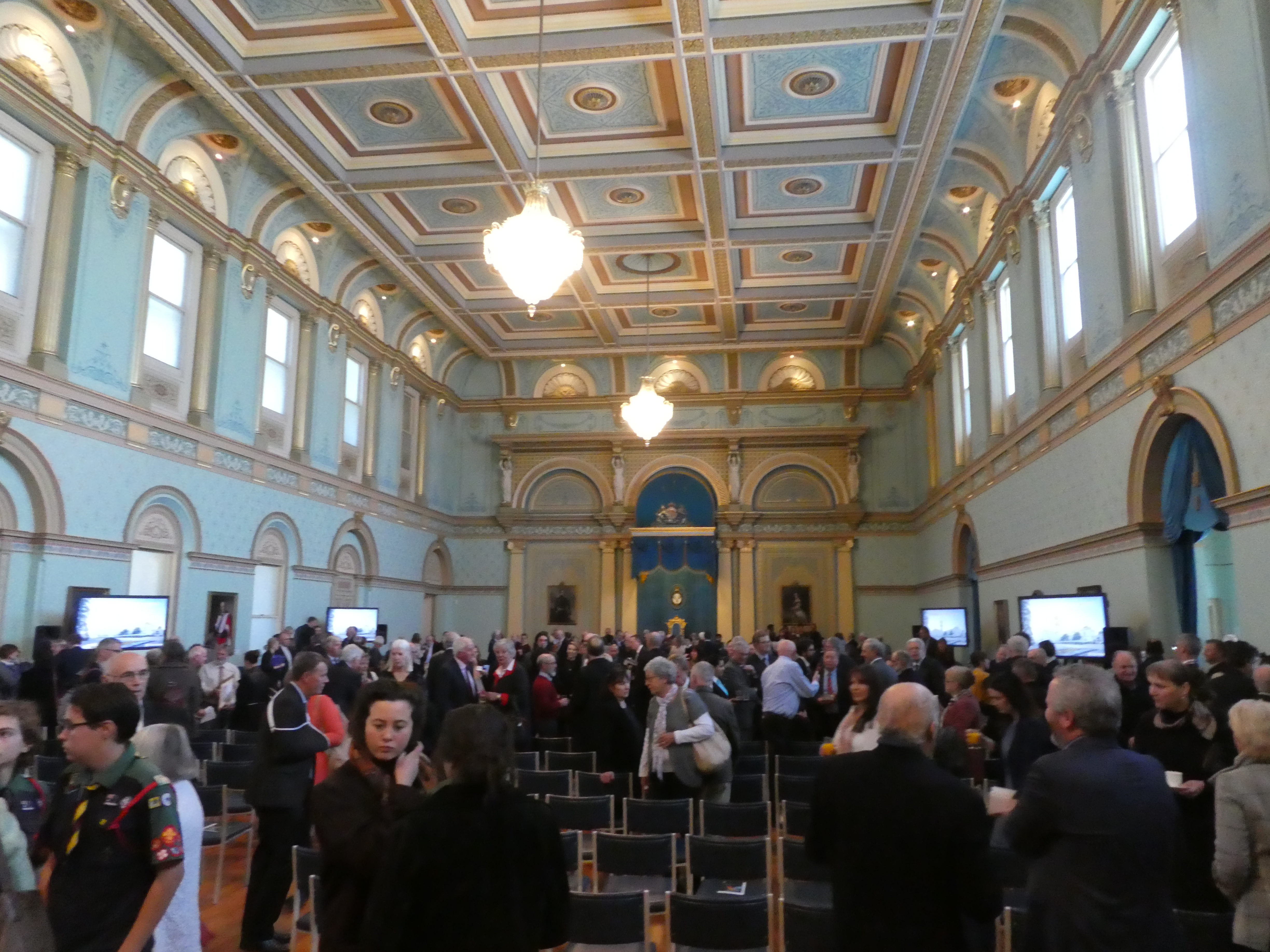Birdlife Castlemaine District celebrates its first birthday
Posted on 26 September, 2019 by Ivan

Sue, Jane, and Phil celebrate Birdlife Castlemaine District’s first birthday at a bird walk in July (photo: Birdlife Castlemaine District)
Connecting Country work with Birdlife Castlemaine District on many projects and share a common love for our regions birds and biodiversity. It was a significant effort and milestone for Castlemaine to have its own Birdlife branch, highlighting the community support and passion for our nature hotspots and wildlife. The newest branch of BirdLife Australia was officially launched at the Castlemaine Botanic Garden’s Tea rooms in July 2018, meaning they recently celebrated their first birthday! A belated ‘Happy Birthday’ and congratulations on a fabulous first year to Birdlife Castlemaine District.
How you can be involved with Birdlife Castlemaine District:
‘Like’ their Facebook page: CLICK HERE
Email castlemaine@birdlife.org.au if you would like to be added to their eNews list.
Become a member of BirdLife Castlemaine District by joining their parent, BirdLife Australia: CLICK HERE
Friends of the Box-Ironbark Forests PhotoShow – Now Open Togs Cafe
Posted on 26 September, 2019 by Ivan
One of Connecting Country’s closest collaborators, Friends of the Box-Ironbark Forests (FOBIF), has a photographic show that is now open at Togs Cafe in Lyttleton Street, Castlemaine, Victoria. It will run till 24 October 2019 and features a stunning array of local photographers. All photos are for sale with proceeds going to FOBIF.
Since 1999, the Friends of the Box-Ironbark Forests have been conducting art and photography exhibitions with this being their tenth exhibition since 2009. Six of these have been at Togs Cafe. They have all had the same purpose: to honor the native forests of the region, continuing the long tradition of artistic involvement with these forests. Photographers in this exhibition are all local residents, and talented ones at that.
Connecting Country would like to thank all the photographers who contributed photos to this project.
You can download a catalogue with a brief description of each photo here.
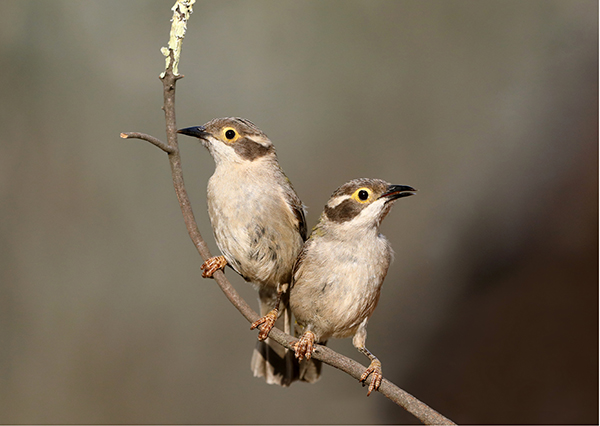
One of the photos from the show: Brown-headed Honeyeater (Lichenostomus melithreptus) Photo: Patrick Kavanagh 2019
Cactus Warriors Wanted – Sunday 29 September 2019
Posted on 26 September, 2019 by Ivan
The Tarrangower Cactus Control Group (TCCG) and Parks Victoria will hold their next community field day this Sunday to the west of the Maldon township, Victoria, Australia. This event is open to everyone in the community and is a great way to learn more about the threats posed by Wheel Cactus and do something about the spread across our region.
Come along, enjoy the fresh air, destroy some cactus and then join the community for a free cuppa and sausage sizzle.
Where: 200 Treloars Road, Tarrengower VIC (follow the signs along Watersons Road)
When: 10.30 am to 12.30 pm, Sunday 29th September 2019
The Tarrangower Cactus Control Group Inc. (TCCG) consists of Landcare volunteers dedicated to the eradication of Wheel Cactus (Opuntia robusta). TCCG, in conjunction with Parks Victoria, holds friendly and informal Wheel Cactus Control community field days to inform and demonstrate control techniques, on the last Sunday of the month from May to October. These field days always end with a free BBQ lunch, cuppa and cake and the opportunity to chat, exchange ideas and make contacts.
It is a great opportunity to spend a rewarding morning outdoors, meeting neighbours and others who are concerned about preserving our unique environment. Everyone is welcome, no previous experience is required and all equipment is supplied. View the video to catch the ‘cactus warriors’ in action.
Looking after parks across Victoria – your chance to help!
Posted on 26 September, 2019 by Asha
Parks Victoria are developing a state-wide Land Management Strategy to guide and inform future planning and decision-making across the parks estate. The Strategy is intended to respond to key challenges – including climate change, population growth, changing community needs, increased visitation, invasive pest species, accessibility requirements and more.
Parks Victoria are now inviting communities and stakeholders to provide their feedback on the draft Aspiration and Guiding Principles that will form the basis of the Land Management Strategy.
You can provide feedback online at www.engage.vic.gov.au/lms until midnight Sunday 29 September 2019. Parks Victoria have also prepared an Engagement Park document (click here to download), to support groups promote the engagement and hold conversations.
If you have further questions, you can contact parkstrategymailbox@parks.vic.gov.au
The Victorian National Parks Association (VNPA) have also offered support and advice through their website: CLICK HERE.
Weeds at the Early Stage of Invasion – Thursday 3 October 2019
Posted on 17 September, 2019 by Ivan
The Weeds at the Early Stage of Invasion (WESI) Project, together with Connecting Country, invite you to join us for a session on identifying environmental weeds.
When: Thursday 3 October 2019 from 10.00 am to 3.00 pm
Where: Newstead Community Centre, 9 Lyons St, Newstead, VIC
To register: click here
To download the event flyer: click here
The session will focus on identification of some early invader environmental weeds relevant to the Mount Alexander region. The WESI Project focuses on high risk invasive species at the early stage of invasion (early invaders) that threaten biodiversity. The WESI project works mainly with Department of Environment, Land, Water and Planning (DELWP) and Parks Victoria staff looking after public land and biodiversity across Victoria.
This training is targeted at community groups, individuals, organisations and land managers. Come along to learn how to identify these plants, how to record and photograph them, and how to treat and survey the area. Early invaders are plants that have naturalised and started to spread. When spread has just begun, such plants are localised and generally encountered only by chance. Coordinated management intervention (i.e., eradication or containment) is feasible at this stage, due to their highly restricted distributions.
This is a free event with morning tea and lunch provided.
Spaces are limited so please register below asap to ensure you don’t miss out!
For more information please contact Bianca Gold and Kate Blood (WESI Project), or Ivan Carter (Connecting Country):
- Kate Blood (0417 135 356 or kate.blood@delwp.vic.gov.au)
- Bianca Gold (0436 694 971 or bianca.gold@delwp.vic.gov.au)
- Ivan Carter (5472 1594 or ivan@connectingcountry.org.au)

Chilean needle grass was once an emerging weed in this region, but is now established around Taradale (photo by Connecting Country)
Meet Castlemaine’s endangered butterfly – Saturday 12 October 2019
Posted on 17 September, 2019 by Ivan
Did you know Central Victoria is home to the largest known population of the endangered Eltham Copper Butterfly in the world?!
Enjoy these beautiful pictures of the Eltham Copper Butterfly taken by Elaine Bayes.
Walking together towards Reconciliation: Weather knowledge of the KULIN Nations
Posted on 17 September, 2019 by Ivan
In some regions the Kulin Nations observed and named seven seasons of varying length in a year; each season happens when certain stages are reached in the natural world. The local Dja Dja Wurrung clans of the Kulin Nation, however, divided the year into six seasons.
The name Poorneet, meaning tadpoles, is given to the time in September and October when temperatures are rising, although there is still plenty of rain. Tadpoles are found in the water holes, and Pied Currawongs are louder and cheekier than ever. Days and nights are of equal length.
Plants like the Murnong (Yam Daisy) are flowering, so it’s time to dig for the yam tubers. Murnong, once abundant all over Victoria, rapidly became scarce after colonists brought what were soon vast numbers of sheep into the region.
Yams may make a comeback as a food source, since Aboriginal communities in East Gippsland and the NSW south coast have begun experimenting with yam cultivation. In his book Dark Emu, Bruce Pascoe tells how the very first records of European explorers and pioneers give evidence that Aboriginal people were farming the land. But to the newcomers, for whom the crops and agricultural methods were totally different from the familiar ones of home, they meant very little. All too soon, grain stores, tilled land, eel traps, houses and wells returned to the soil from which they had come.
Many thanks to Nalderun for this article. Nalderun is a service that supports the Aboriginal Community, led by Aboriginal people. Many people and organisations in the Mount Alexander Shire contribute to Nalderun; the name is a Dja Dja Wurrung word meaning ‘all together’. More information can be found at www.nalderun.net.au
Tim Low’s challenging ‘New Nature’ talk in Newstead
Posted on 17 September, 2019 by Ivan
Connecting Country and Newstead Landcare Group recently hosted a presentation by well-known author and biological scientist Tim Low. Tim attracted a packed room of 200 excited people to Newstead VIC. He guided us through some highlights from his recently revised book ‘The New Nature’, exploring the concepts of winners and losers in a world of human impact, changing climate and declining resources.
Tim said the attendance was one of the best he had been involved with and interest from the audience was outstanding. Tim described some surprising examples of how conservation and urbanisation can co-exist in some situations. A theme from the talk was that the conservation movement often talks about declining species, as it should, but this leaves many people unaware that some animals and plants are doing better today than ever before, because they have found ways to exploit us.
The ‘New Nature’ book reinforces the concept that animals don’t have any concept of ‘natural’ or ‘unnatural’ so they don’t automatically recoil from cities and farms. Sometimes they can do better in cities than in forests, and Tim suggested that Australian cities and towns are gaining animals over time. The audience was surprised to hear that Melbourne, Sydney and Brisbane are now home for peregrine falcons that nest on skyscrapers, and feed off pigeons and other city-dwelling birds. After the talk Tim took questions from the audience. He stressed that while we will have some winners from our changing planet, we must continue to work hard to prevent losing more species to extinction through habitat loss.
Many thanks to Frances Cincotta and Newstead Landcare Group for helping organise this event and doing some fantastic work. The event was supported by funding from North Central Catchment Management Authority as part of Connecting Country’s ‘Prickly Plants for Wildlife on Small Properties’ project, as well as a donation from Friends of the Box-Ironbark Forests.
Although the event was not recorded, there is link to a similar talk on Youtube below.

Tim Low (second from left) with Frances Howe, Frances Cincotta and Ivan Carter (photo by Connecting Country)
 Tim Low
Tim Low
Tim Low is a biologist and best-selling author of seven books about nature and conservation. ‘Where Song Began’ won several prizes, including the Australian Book Industry Award for best general non-fiction. It was praised in the New York Review of Books and recommended by Scientific American. ‘The New Nature’ was praised by Time magazine and listed by Who magazine as one of the books of the year. ‘Feral Future’ inspired the formation of a conservation group, the Invasive Species Council. Tim’s articles have appeared in Australian Geographic, The Weekend Australian Magazine, The Guardian and many other places. He works partly as an environmental consultant, and has a lizard named after him. He recently returned from a visit to Manchuria as a guest of the China Writer’s Association.
You can read more about Tim Low and view his Blog and website – click here
Youth grants for invasive species – closing 30 September 2019
Posted on 12 September, 2019 by Ivan
Connecting Country are keen to engage and involve youth in natural resource management activities across our region. This grant program supports youth-friendly initiatives with a focus on invasive pest and weed issues in Victoria. The program aims to increase young people’s participation in community environmental projects and encourage new ideas and innovations in the invasive species challenge. Funding can be used to support the engagement of young people in existing groups and initiatives, or to develop new youth-focused initiatives.
Applications close: 5.00 pm on 30 September 2019
Grants between $5,000 and $15,000 (excluding GST) are available.
Who can apply: Open to community groups, education providers and local councils, with a focus on projects that connect with young people and develop their skills, and deliver broader benefits for local communities.
How to apply:
- Read the program guidelines – click here.
- Contact the Grants Program Coordinator if you have questions about your application. Lauren Hull can be contacted on 0472 876 695 or lauren.hull@agriculture.vic.gov.au.
- Download the application form and complete all sections – click here.
Key dates:
- Successful grants announced – November 2019.
- Projects undertaken – November 2019 to June 2020.
Inspiration and ideas: There’s lots of projects underway that are boosting youth participation in environmental initiatives. If you’re looking for a starting point for your invasive species work, click here to see just a few projects that have been proposed.
More information: Contact Lauren Hull 0472 876 695 or lauren.hull@agriculture.vic.gov.au
The rumours are true: North Harcourt & Sedgwick Landcare is back!
Posted on 12 September, 2019 by Asha
You may have heard the rumors. And yes, they are true! After a five year hiatus, North Harcourt & Sedgwick Landcare Group are planning on planting on, and they need YOU!
Anyone who is interested is welcome to come along to a casual meet up, where they will be throwing a BBQ, giving away some free plants, and showing off some nest boxes.
When: Sunday 22 September 2019 from 12:00 pm – 2:00 pm
Where: Sedgwick Hall, corner Springs Rd and Sedgwick Rd, Sedgwick, VIC (scroll through photos below for a map)
RSVP: Appreciated via nhselandcare@gmail.com or their Facebook event – click here
To stay up-to-date, join their public Facebook group here: click here
Spring railway walk with Nuggetty Land Protection Group – 22 September 2019
Posted on 11 September, 2019 by Jess
Nuggetty Land Protection Group is planning a walk along the Nuggetty to Shelbourne Railway line. This was a branch line from Maldon through Nuggetty and Bradford and ends at the Shelbourne Station complex. The old railway line traverses farmland and Bradford Nature Conservation Reserve. The line was closed in 1960 after due to major fire damage. There will be a stop for lunch at the reserve to look at local birds, orchids and other flora. Binoculars, tea, coffee and water will be available.
Spring railway walk
When: Sunday 22 September 2019 from 9:30 am
Where: Park at Nuggetty Peace Monument, Nuggetty School Rd, Nuggetty VIC (turn right off Shelbourne Rd north of Maldon). A community bus will transport walkers to start of walk.
Bookings preferred: Jane Mitchell (0457 729 132) or Christine Fitzgerald (0419 347 408)
The walk is approximately 13 km. Bus will meet at intersections of roads if lift required and return you to your car or take you to next section of the walk. Please bring own lunch and water, and wear walking shoes, weather appropriate clothing and hats. The event will be cancelled if weather inclement. Please leave pets at home.
A new weed to watch: Espartillo
Posted on 11 September, 2019 by Ivan
Espartillo is an invasive perennial tussock grass that invades pastures, native grasslands and stream banks in temperate climates. Espartillo is unpalatable and has little nutritive value for stock. It has infested pastures, native grasslands, riparian areas and other areas of environmental importance. It is also known to invade lucerne crops.
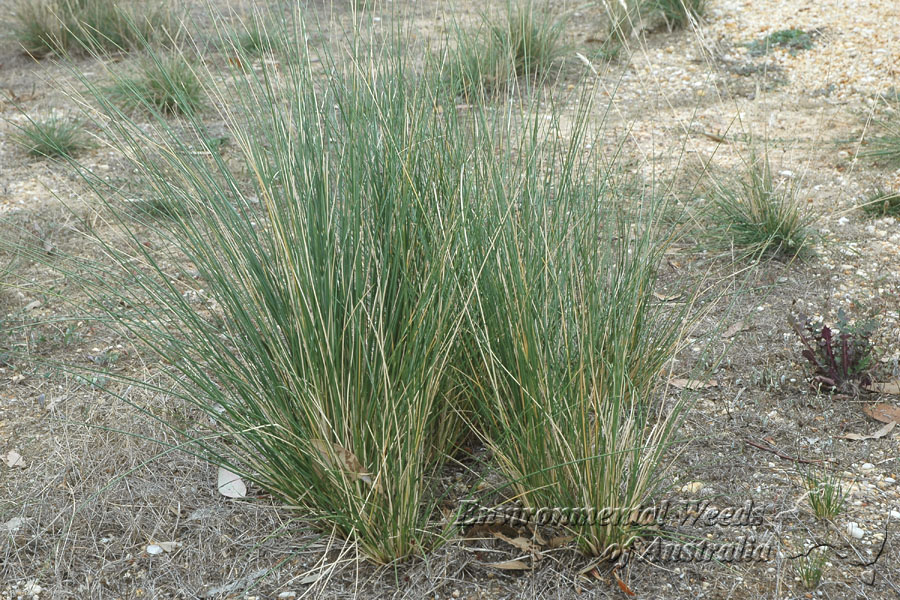
Espartillo is related to Serrated Tussock and Chilean Needle Grass (photo: Environmental Weeds of Australia)
Found along roadsides and disturbed areas, it can quickly encroach into neighbouring properties and bushland, particularly if there is a lot of bare ground. Once established, espartillo is difficult to manage and control. Native to Argentina, Chile and Uruguay, espartillo is considered a weed in New Zealand, United States of America, Italy and Spain. Even within its native range of Argentina it is a troublesome weed of lucence crops.

Espartillo can tolerate dry and harsh conditions and spreads rapidly (photo: Environmental Weeds of Australia)
Espartillo was first recorded in New South Wales in the 1950s and is present in a few localised areas. The concern with espartillo is that under the right conditions, it may quickly increase its range and density. It is now found throughout the Riverina, western slopes and plains regions of New South Wales. In Victoria, espartillo is mostly located in the central districts of Maryborough, Dunolly and Clunes where it continues to spread.
Local resident Margaret Panter produced an informative pamphlet about this invasive South American weed – see below or click here
Congratulations! – Victorian Landcare Awards 2019
Posted on 5 September, 2019 by Asha
Congratulations to receivers of the Victorian Landcare Awards! The awards were presented last Friday (30 August 2019) in a ceremony at Government House in Melbourne. Our local winners included:
- Malmsbury District Landcare Group – Winner of the Australian Community Media Landcare Community Group Award.
- Harcourt Valley Landcare Group – Highly Commended for the Australian Community Media Landcare Community Group Award.
- Ian Grenda – Highly Commended for the Australian Government Individual Landcarer Award.
On the day a lovely short video was also filmed called ‘I care, We care, Landcare’. To watch the video on YouTube – click here
To read more about the awards and winners – click here
Join Connecting Country’s Bird Watch program
Posted on 5 September, 2019 by Ivan
Observing nature over time provides evidence of landscape changes. Rigorous, long-term monitoring is essential to determine if threatened species are declining, or if landscape restoration efforts are effective in improving habitat for our at-risk species. In 2010, Connecting Country began monitoring woodland birds across the Mount Alexander region, as indicators of biodiversity and ecosystem health. With help from scientists, we established a long-term monitoring program, targeting members of the threatened Victorian Temperate Woodland Bird Community. From 2010 to 2017, field surveys were completed by experienced, and well-respected birders such as Garry Cheers, Tanya Loos and others.
We now have a rare and incredibly valuable database of rigorous, long-term results that can tell us how our woodland birds are faring in response to climatic events, and if habitat restoration is really helping them. However, fluctuating resources put our future monitoring program at risk. At the same time we’ve recognised that engaging community is central to successful biodiversity conservation.
We’ve been developing a new, community-driven model, where community members direct the research questions, and committed volunteers collect the data on the ground. Connecting Country is working to support a rich resource of skilled, committed and enthusiastic volunteers who are collecting scientifically rigorous data.
We plan to reinvigorate the program by monitoring all 50 of our key sites twice each in spring 2019. From then on, we’ll ideally monitor each site four times a year – twice in winter and twice in spring. With our current network of volunteers, we currently have capacity to survey about half of our 50 established sites. It would be wonderful if we could survey more of these sites this spring, and into the future.
If you are a skilled and experienced local birdwatcher, we would be delighted if you can help us to monitor local birds. To register your interest, please contact Jess Lawton (Monitoring Coordinator – Connecting Country) at jess@connectingcountry.org.au or 03 5472 1594 as soon as possible.
We’d like to know:
- If you’re available to assist with our bird surveys.
- Your capacity (amount of time) to assist with bird monitoring in spring (September to November) 2019, or the number of sites you’d be willing to take on.
- If your capacity is likely to continue into the future.
- Where you are located and/or would like to survey – a location near you, or elsewhere in the Mount Alexander region.
Castlemaine BirdLife walk at Pilchers Bridge – 7 September 2019
Posted on 5 September, 2019 by Ivan
Fancy a lovely walk through the Pilchers Bridge Nature Conservation Reserve (near Sutton Grange), led by local enthusiasts Jenny Rolland and Euan Moore? Please see the monthly Birdlife Castlemaine walk details below, from their e-newsletter.
Saturday 7 September 2019 at Pilchers Bridge Nature Conservation Reserve
Join us for a spring-time walk in the beautiful Pilchers Bridge Nature Conservation Reserve, led by Jenny Rolland and Euan Moore. We will walk down Andrews Track through mixed box forest to the dam where we will sit and watch the birds as we have a morning tea break (a small mat would be useful for sitting on by the dam). Then we will walk eastwards along Andrews Track (undulating), head north off-track and return to Andrews Track along the creek lines. The terrain here will be open and relatively flat but the ground could be uneven. We will then walk back up the hill to the cars. This walk is based on a walk from Damian Kelly’s ‘Castlemaine Bird Walks’ book (page 75).
We should see several honeyeater and thornbill species, Treecreepers, Scarlet Robin, Rufous Whistler, Grey Fantail, Crimson Rosella, and if we are lucky, Speckled Warbler and Hooded Robin.
All ages and levels of experience welcome. This is an easy walk covering approx 3 km, finishing at around midday. Please note there are no toilets at the Reserve.
Location and directions: From Harcourt, travel southeast along the old Calder Highway (Harmony Way) for about 6 km and turn left along Faraday-Sutton Grange Road. After about 9 km, turn left along the Bendigo-Sutton Grange Road and after about 7 km turn right into Huddle Road (unsealed). After about 1.5 km, look for a small unsealed track on the right – Andrews Track. Park at this junction or at the lay-by about 50 m before the junction. If you reach the sealed road, you have gone too far.
Time: Meet at the junction of Huddle Road and Andrews Track in the Pilchers Bridge Nature Conservation Reserve at 8:45 am, or to carpool from Castlemaine meet at 8:00 am outside Castlemaine Community House (formerly Continuing Ed), Templeton Street, Castlemaine VIC.
Important information about walks: Bring water, snacks, binoculars, hat, sunscreen, sturdy shoes, long pants during snake season, and other weather-appropriate gear.
Walks will be cancelled if the temperature is forecast to be 35 degrees or more during the walk period, severe weather warnings are forecast, and/or if the day has been declared a Total Fire Ban.
Questions? If you have questions about BirdLife Castlemaine’s walks program, you can email at castlemaine@birdlife.org.au, or call Judy Hopley (0425 768 559) or Asha Bannon (0418 428 721).
Friends of the Box-Ironbark Forests AGM – Monday 9 September 2019
Posted on 4 September, 2019 by Ivan
Jase Haysom, well-known local map maker, will speak at the upcoming Annual General Meeting (AGM) for Friends of the Box-Ironbark Forests (FOBIF).
FOBIF AGM
When: 7.30 pm on Monday 9 September 2019
Where: Ray Bradfield Room, Forest St, next to Victory Park, Castlemaine VIC (access from IGA car park).
Information on how to nominate for the FOBIF Committee can be found here. All welcome and supper will be served.
Jase describes himself as ‘an incidental cartographer’:
‘I did not consciously decide that I would become a cartographer. It seems that, as a result of obliquely related actions, incremental step by incremental step I nudged myself in that direction. In the talk I’ll briefly look at how these incidental incremental steps occurred. I’ll then briefly discuss the mechanism I use to build a map and the limitations of the process. If time permits the talk will finish with some personal observations.’
You can find out more about Jase’s map making including examples of maps at Cartography Community Mapping. He offers free mapping services to non-profit organisations such as Landcare groups. The maps have proved useful for resource management and as support material for reports, grant applications, transport and training purposes.

Brush-tailed Phascogale (photo by Mike Grinter)
